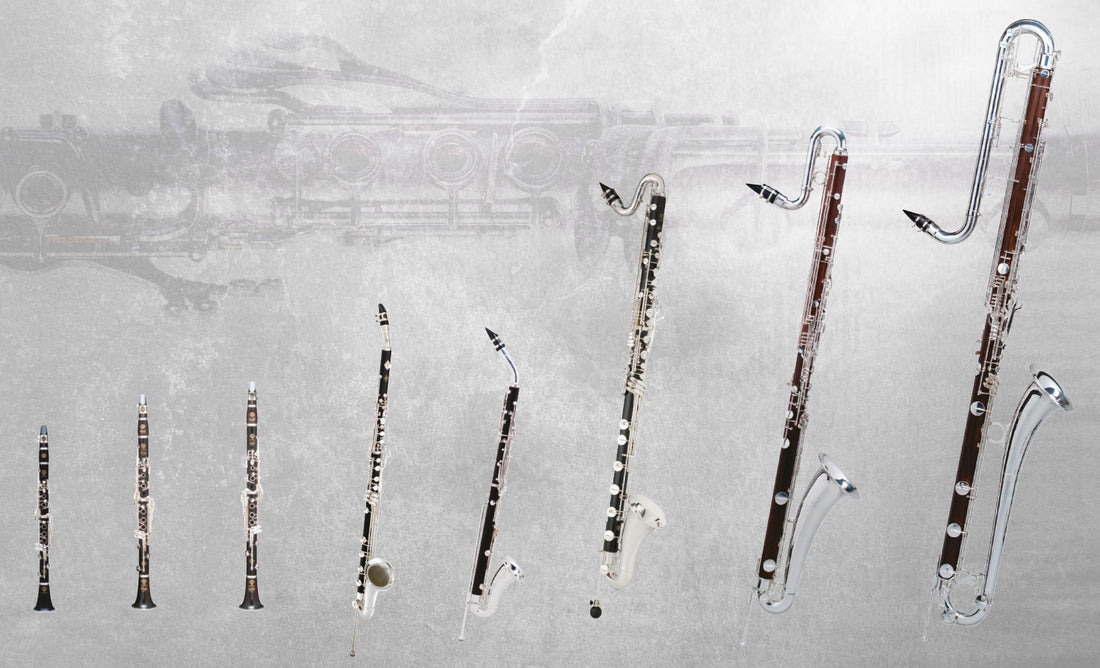The clarinet family

The small clarinet in A-flat
Today, it is a subject of curiosity in its own right, as it has become very rare and is the object of great desire among discerning collectors. Its use, however, has been essentially limited to military music.

The small clarinet in E-flat
Berlioz knew how to get the best out of it in his Symphonie fantastique . However, it requires a solid technique because its high register is only accessible with special fingerings. What we like most about it is the quality of its timbre in the high register.

The little clarinet in D
Also used very sparingly, the small D clarinet nevertheless enjoyed the favor of Molter in his concertos and Richard Strauss in his symphonic poem Till Eulenspiegel . It has the advantage of being easier to use than the E♭.

The C clarinet
Today, it is no longer favored by clarinetists, who prefer the B♭ clarinet. It is sometimes used as a practice instrument. However, it charmed Franz Liszt in Faust (symphony with chorus) as much as Richard Strauss in Der Rosenkavalier .

The B♭ clarinet
It is the most widely used. It combines brilliance, eloquence, roundness and luminosity, and proves very intimate with woodwinds and strings. Its immense virtuosity earns it many soloist roles, in classical, jazz, and contemporary music alike.

The A clarinet
It is very familiar to fans of the B♭ clarinet, who recognize in it an intimacy of tone imbued with exquisite sweetness, enhanced by a very beautiful depth of timbre. It has earned itself a prominent place in the chamber music of Mozart and Brahms.

The A-flat basset clarinet
It uses the same configuration as the clarinet in A, with the particularity of offering an extension to the low C. It is particularly appreciated in the interpretation of Mozart's Clarinet Quintet K 581, but remains very rare nonetheless. 
The basset horn in F
It's impossible not to think of Mozart, who loved to incorporate it into his Requiem . Strauss and Massenet also used the basset horn in F. Previously bent in the middle, the basset horn is now straight and has a metal bell.
The Eb alto clarinet
The E-flat alto clarinet is distinguished from other clarinets by the presence of a curved metal bell and a curved metal mouthpiece, as is already the case with the basset horn. It is a highly sought-after and appreciated instrument in chamber music.
The bass clarinet in B♭
Its bell is bent and its bell is larger, while its low register is authoritative and blends wonderfully with woodwinds and strings in jazz and contemporary music. There are two bass models: one descending to E♭ low and the other to C low.
The E-flat alto clarinet
It derives all its charm from its superb, velvety low register, which gives it a sound foundation of exceptional quality. But it must be admitted that its use is still unfortunately too infrequent within the symphony orchestra.
The bass clarinet in B♭
Its shape distinguishes it from other clarinets: it is coiled around itself and its total length is 2.31 m. Made of metal and wood, it sounds an octave lower than the bass in B♭. Composers are giving it an increasingly important role.
